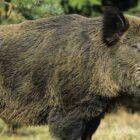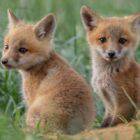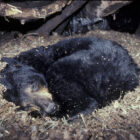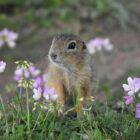Are “feral super pigs” real?
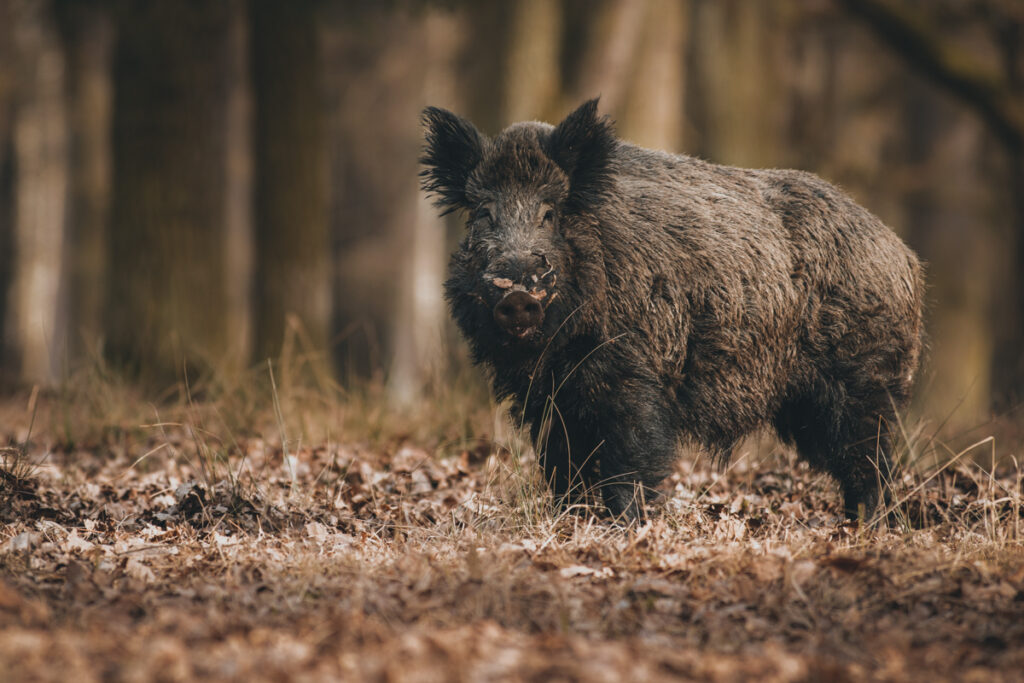
In the vast expanse of the Canadian Prairies, where fields meet forests and snow blankets the landscape, an unexpected presence thrives – the feral pig. Also known as “feral super pigs“, these creatures are not your ordinary farm pigs. They are descendants of domestic pigs that have escaped into the wild, and they have adapted to the Canadian climate with surprising success.
A History of Invasion
The story of the wild boar invasion in Canada begins in the 1980s when these animals first began escaping from farms. At that time, the Canadian government was actively encouraging the importation of wild boars from Eurasia as a means of diversifying farms. Little did they know that this would lead to an unintended consequence— the establishment of a population of highly adaptable and resilient animals that would eventually become a nuisance to farmers and a threat to native wildlife.
While the initial intentions might have been well-meaning, the reality is that wild boars, with their remarkable ability to survive and thrive in harsh conditions, quickly became a problem. They found a suitable habitat in areas with crops to eat, river valleys, and tree cover to hide in. These areas provided them with food, shelter, and protection from predators, allowing them to reproduce and spread rapidly.
The hybridization of wild boars with domestic pigs further complicated the situation. These crossbred animals, often referred to as “feral super pigs”, inherited traits from both parent species, making them even more adaptable and resilient. This genetic diversity allowed them to exploit a wide range of habitats and food sources, further fueling their population growth.
Why are feral super pigs so big?
While the average weight of a North American wild pig ranges from 150 to 220 pounds, Canadian feral pigs have been observed to weigh well over 600 pounds. This apparent size increase has puzzled scientists and researchers, as it is significantly larger than that of their Eurasian wild boar ancestors.
One possible explanation for this size discrepancy is the influence of domestic pig genetics. Domestic pigs, which are descendants of European wild boars, have been selectively bred for larger size and meatier builds, particularly in the context of commercial pig farming. This intense selection pressure has led to the development of pigs that are significantly larger than their wild counterparts.
When feral pigs interbreed with domestic pigs, they inherit a mix of traits from both parent species. This includes the genes responsible for larger size and increased muscle mass, which may contribute to their overall bulk. However, it is important to note that feral pigs in Canada are believed to be more closely related to wild boars than to domestic pigs. This suggests that other factors may also be at play.

Hybrid Vigor
One such factor could be the harsh environmental conditions in which feral pigs in Canada live. The Canadian Prairies are known for their harsh winters and rugged terrain, which can create a selective pressure for larger body size. Larger animals are better equipped to withstand cold temperatures and navigate difficult terrain, giving them a survival advantage. This could explain why feral pigs in Canada are larger than their counterparts in other regions.
Another possible explanation is the presence of hybrid vigor. When two genetically distinct populations interbreed, the resulting offspring may exhibit increased fitness and resilience. This phenomenon, known as hybrid vigor or heterosis, can result in larger, healthier individuals with greater reproductive success. This could contribute to the larger size of feral pigs in Canada, as they may benefit from the genetic diversity resulting from hybridization.
The Impact of Feral Pigs
The presence of feral pigs in Canada has had far-reaching consequences for both the environment and the economy. These animals, with their voracious appetites and destructive behavior, have caused significant damage to crops, natural habitats, and native wildlife.
Crop Damage
One of the most immediate and tangible impacts of feral pigs is their destruction of crops. These animals are opportunistic feeders and will consume a wide variety of plants, including wheat, barley, canola, and more. Their rooting behavior, which involves using their long, sharp snouts to dig up soil in search of food, can cause extensive damage to agricultural fields. This not only results in direct financial losses for farmers but can also disrupt the local ecosystem and reduce the overall productivity of the land.
Furthermore, feral pigs can also damage grain bins and storage containers, leading to additional losses for farmers. Their ability to plow through large patches of farmland in search of invertebrates, roots, and other edibles can result in widespread destruction and loss of yield.
Erosion and Water Contamination
In addition to their impact on crops, feral pigs can also cause significant environmental damage. Their wallowing behavior, which involves rolling around in mud and water, can lead to erosion of stream beds and contamination of water sources. This can have negative consequences for aquatic ecosystems and the organisms that rely on them for survival.
Potential Disease Transmission
Another concern associated with feral pigs is their potential to spread diseases to both wildlife and domestic animals. As mentioned earlier, these animals can carry a wide range of diseases, including hand, foot, and mouth disease and African swine fever (ASF). If transmitted to domestic herds, these diseases could have devastating consequences for the Canadian pork industry, leading to significant economic losses.
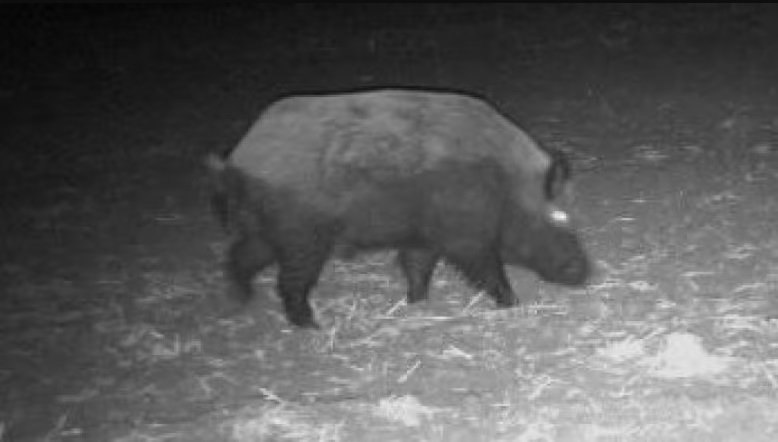
Furthermore, the presence of feral pigs can also pose a risk to public health. Diseases carried by these animals could potentially be transmitted to humans, either directly through contact or indirectly through contaminated water sources. This highlights the importance of controlling the population of feral pigs to minimize the risk of disease transmission.
Impact on Biodiversity of the feral pigs
The presence of feral pigs can also have a negative impact on native wildlife and biodiversity. These animals are omnivorous and will consume a wide variety of plants and animals, including small mammals, birds, amphibians, and eggs. Their predation can disrupt local ecosystems and lead to declines in native species populations.
The Challenge of Eradication
Eradicating feral pigs in Canada presents a daunting challenge, requiring an understanding of their behavior, biology, and the various factors that contribute to their persistence. Their adaptability, resilience, and reproductive potential make them difficult to control and eradicate, requiring a multifaceted approach that involves the cooperation of multiple stakeholders.
Elusiveness and Mobility
Feral pigs are notoriously difficult to locate and capture. Their thick fur and climate adaptability allow them to move quickly and blend into their surroundings, making them difficult to spot. Furthermore, their ability to exploit a wide range of habitats, including river valleys, tree cover, and agricultural fields, allows them to evade detection and avoid capture.
Reproductive Potential
Feral pigs have a high reproductive potential, with females capable of producing multiple litters of piglets per year. This rapid reproductive rate allows their populations to grow quickly, making it challenging to control their numbers through traditional hunting and trapping methods.
Hybridization with Domestic Pigs
The hybridization of feral pigs with domestic pigs further complicates eradication efforts. These crossbred animals inherit traits from both parent species, making them even more adaptable and resilient. The genetic diversity resulting from hybridization allows them to exploit a wider range of habitats and food sources, further fueling their population growth.
Disease Transmission
Feral pigs can carry a wide range of diseases, including hand, foot, and mouth disease and African swine fever (ASF). The potential for disease transmission further complicates eradication efforts, as it requires careful management and monitoring of both feral pig populations and domestic herds.
Public Perception and Policy
The public perception of feral pigs and their management can also present challenges. While some view these animals as a nuisance and a threat to agriculture and the environment, others may see them as a valuable resource for hunting and recreation. This diversity of perspectives can make it difficult to develop and implement effective eradication strategies that are acceptable to all stakeholders. Additionally, policy and regulatory frameworks may vary between provinces, further complicating efforts to coordinate and implement eradication programs on a national scale.

